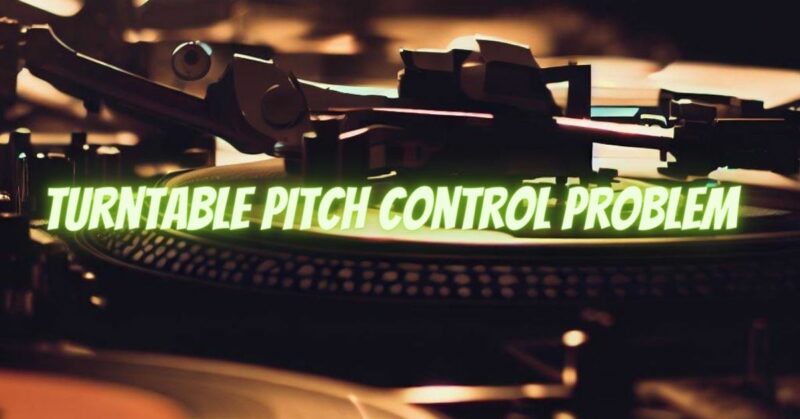Turntables have experienced a resurgence in popularity in recent years, captivating audiophiles and music enthusiasts with their analog charm. However, like any mechanical device, turntables can encounter issues over time, and one common problem is pitch control problems. These issues can disrupt the accuracy of the playback speed, affecting your listening experience. In this article, we will explore the causes of turntable pitch control problems and provide practical solutions to help you resolve these issues and restore the correct playback speed.
Understanding Pitch Control on Turntables
Pitch control on a turntable allows users to make fine adjustments to the rotational speed, ensuring that the music is played back at the desired pitch. This feature is particularly important when playing records that may not have been produced to the exact standard speed (e.g., due to manufacturing variations). Pitch control is typically measured in a percentage or a range of values (+/- 8%, +/- 10%, etc.), indicating how much you can adjust the pitch.
Common Causes of Turntable Pitch Control Problems
- Dust and Debris: Dust, dirt, or debris can accumulate on the pitch control slider or potentiometer, leading to erratic adjustments or stuck controls.
- Potentiometer Wear: Over time, the potentiometer (the internal component responsible for pitch control) can wear out, causing inconsistent or imprecise adjustments.
- Electrical Issues: Loose connections, soldering problems, or damaged wires within the pitch control circuit can result in pitch control problems.
- Lubrication Problems: In some cases, the pitch control slider or knob may require lubrication to move smoothly. Lack of lubrication can lead to stiffness or erratic adjustments.
- Age and Wear: Vintage turntables may experience pitch control issues due to aging components or outdated technology.
Solutions to Address Turntable Pitch Control Problems
- Cleaning and Maintenance: Regularly clean the pitch control slider or knob with a specialized electronics cleaner to remove dust and debris. Ensure that the control mechanism is free of obstructions.
- Lubrication: If the pitch control feels stiff or sticky, consult your turntable’s manual to determine if lubrication is required. Use a suitable lubricant recommended by the manufacturer.
- Potentiometer Replacement: If the potentiometer is worn or malfunctioning, consider replacing it. This may require soldering skills or professional assistance, depending on your comfort level with electronics.
- Electrical Inspection: Inspect the electrical components of the pitch control circuit for loose connections, damaged wires, or soldering issues. Address any problems you discover.
- Professional Repair: If you are uncertain about the cause of the pitch control problem or lack the technical expertise to resolve it, seek assistance from a professional turntable technician or repair service.
- Consider Upgrading: If you have an older turntable and pitch control problems persist despite your efforts, it may be worth considering an upgrade to a more modern and reliable turntable model.
Pitch control problems on a turntable can be frustrating, but with the right approach, many of these issues can be resolved or mitigated. Regular cleaning and maintenance are essential for preventing dust and debris buildup, while lubrication and component replacement may be necessary in some cases. By addressing turntable pitch control problems promptly and effectively, you can continue to enjoy the authentic analog sound of vinyl records without interruptions.


